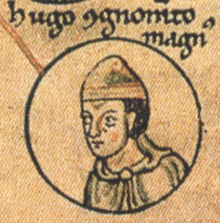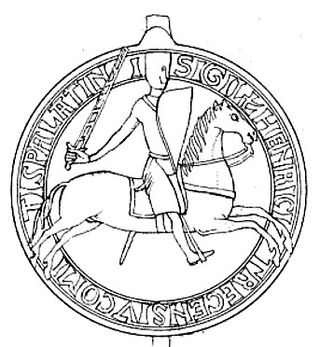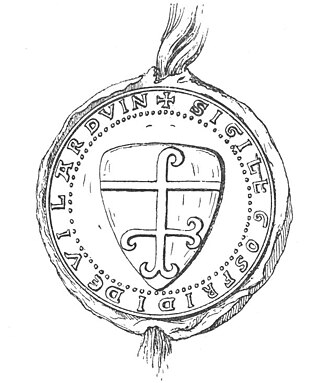Related Research Articles

Stephen Henry was the Count of Blois and Count of Chartres. He led an army during the First Crusade, was at the surrender of the city of Nicaea, and directed the siege of Antioch. Returning home without fulfilling his crusader vows, Stephen joined the crusade of 1101. Making his way to Jerusalem, he fought in the Second Battle of Ramla, where he was captured and later executed.

The Fourth Crusade (1202–1204) was a Latin Christian armed expedition called by Pope Innocent III. The stated intent of the expedition was to recapture the Muslim-controlled city of Jerusalem, by first defeating the powerful Egyptian Ayyubid Sultanate. However, a sequence of economic and political events culminated in the Crusader army's 1202 siege of Zara and the 1204 sack of Constantinople, the capital of the Greek Christian-controlled Byzantine Empire, rather than Egypt as originally planned. This led to the Partitio terrarum imperii Romaniae or the partition of the Byzantine Empire by the Crusaders and their Venetian allies leading to a period known as Frankokratia, or "Rule of the Franks" in Greek.

Baldwin I was the first Emperor of the Latin Empire of Constantinople; Count of Flanders from 1194 to 1205 and Count of Hainaut from 1195 to 1205. Baldwin was one of the most prominent leaders of the Fourth Crusade, which resulted in the sack of Constantinople in 1204, the conquest of large parts of the Byzantine Empire, and the foundation of the Latin Empire. He lost his final battle to Kaloyan, the emperor of Bulgaria, and spent his last days as his prisoner.

Hugh, Count of Vermandois, called the Great was the first count of Vermandois from the House of Capet. He is known primarily for being one of the leaders of the First Crusade. His nickname Magnus is probably a bad translation into medieval Latin of an Old French nickname, le Maisné, meaning "the younger", referring to Hugh as younger brother of King Philip I of France.

Henry II of Champagne was count of Champagne from 1181 to 1197, and king of Jerusalem from 1192 to 1197 by virtue of his marriage to Queen Isabella I of Jerusalem.

Henry I, known as the Liberal, was count of Champagne from 1152 to 1181. He was the eldest son of Count Theobald II of Champagne, who was also count of Blois, and his wife, Matilda of Carinthia.

Eudes III, commonly known in English as Odo III, was duke of Burgundy between 1192 and 1218. Odo was the eldest son of duke Hugh III and his first wife Alice, daughter of Matthias I, Duke of Lorraine.

Hugh IV of Burgundy was Duke of Burgundy between 1218 and 1272 and from 1266 until his death was titular King of Thessalonica. Hugh was the son of Odo III, Duke of Burgundy and Alice de Vergy.

Hugh was the Count of Champagne from 1093 until his death.
Theobald III of Blois (1012–1089) was count of Blois, Meaux and Troyes. He was captured in 1044 by Geoffrey II, Count of Anjou, and exchanged the county of Touraine for his freedom. Theobald used his nephew's involvement with the Norman invasion of England, to gain authority over the County of Champagne. He died in 1089.

William I of Champlitte (1160s-1209) was a French knight who joined the Fourth Crusade and became the first prince of Achaea (1205–1209).

Geoffrey I of Villehardouin was a French knight from the County of Champagne who joined the Fourth Crusade. He participated in the conquest of the Peloponnese and became the second prince of Achaea.
Milo IV, also Milon du Puiset, was a French crusader from Champagne. His parents were Hugh IV of Le Puiset and Petronilla, countess of Bar-sur-Seine.
Erard II was the Sire de Chacenay (Chassenay) from 1190/1. He was the eldest son of Erard I of Chacenay and Mathilde de Donzy.
Hugh III, Lord of Broyes was Lord of Broyes at the end of the 11th century. He was the son of Simon I of Broyes and his wife Félicité de Brienne, daughter of Erard I, Count of Brienne.
Hugh IV of Saint-Pol from the House of Campdavaine, son of Anselm of Saint-Pol, was count of Saint-Pol from 1174 to his death, and lord of Demotika (Didymoteicho) in Thrace in 1204–05. He participated in the Third and Fourth Crusades.
Walter of Montbéliard was regent of the Kingdom of Cyprus from 1205 to 1210, and Constable of Jerusalem from around 1204 to his death.

Renard II, also spelled Reynald, Raynald, Rainard or Renaud, was the count, or lord, of Dampierre-le-Château in the Astenois. His lordship lay partly within the Holy Roman Empire, but he was also a direct vassal of the Count of Champagne.
The armies of Count Stephen of Blois participated in both the First Crusade of 1096 and the Crusade of 1101. Stephen apparently fled the battlefield at the Siege of Antioch and returned home. He was coerced by his wife, Adela of Normandy, to form another army to return to the Holy Land in 1101, accompanied by Count Stephen I of Burgundy.

Simon of Joinville was a French knight, who became the Lord of Joinville from 1204 until his death in 1233. He was also the hereditary seneschal of the County of Champagne.
References
- Evergates, Theodore (1999). Aristocratic women in medieval France. University of Pennsylvania Press.
- Phillips, Jonathan (2004). The Fourth Crusade and the Sack of Constantinople. Penguin Group.
- Schenk, Jochen (2012). Templar Families, Landowning Families and the Order of the Temple in France, c.1120-1307. Cambridge University Press.